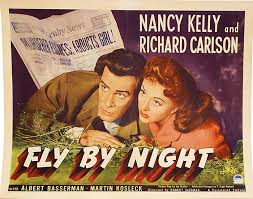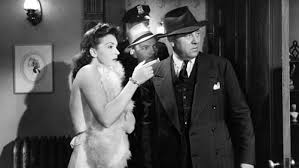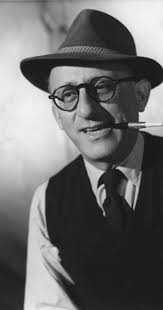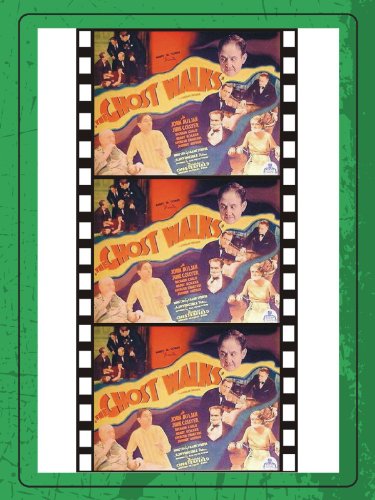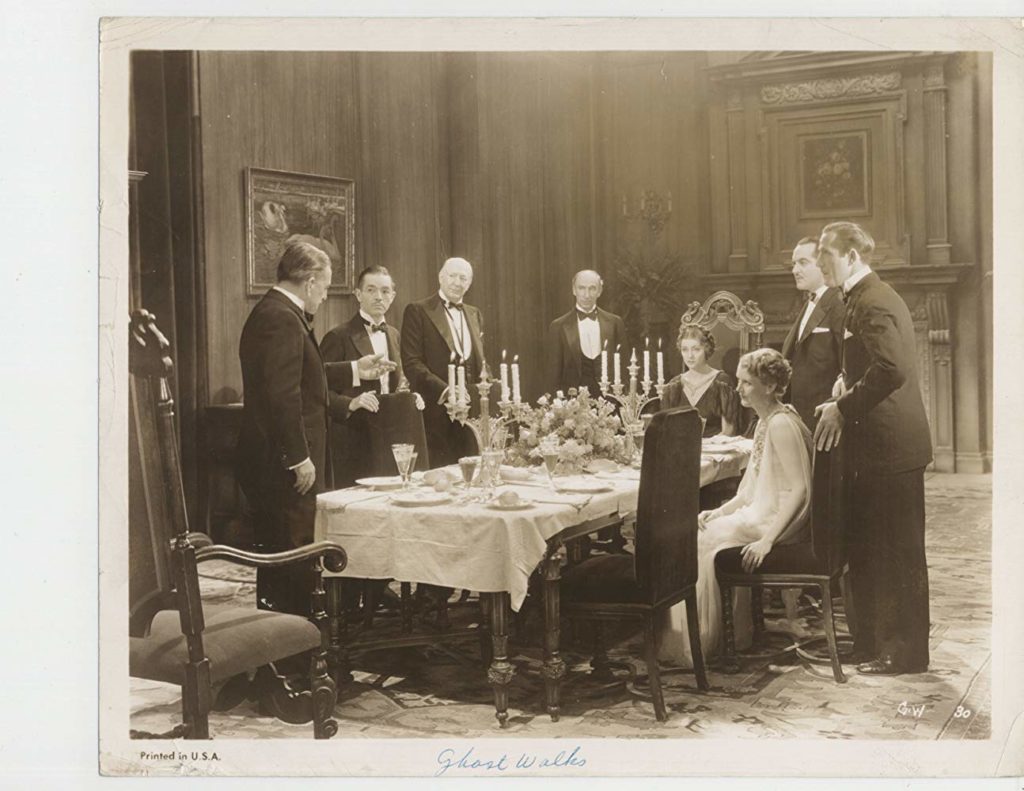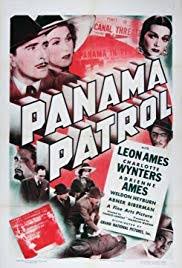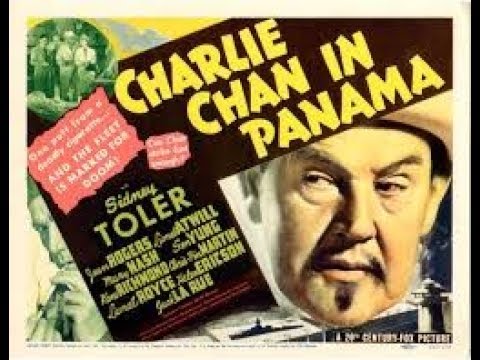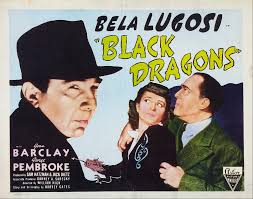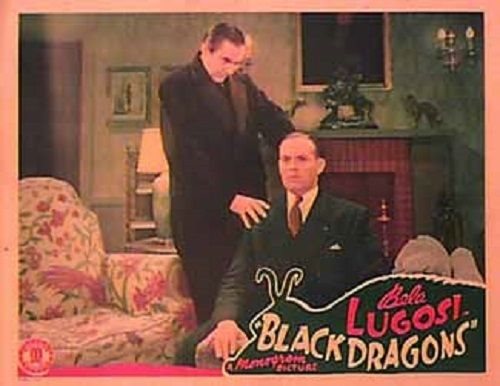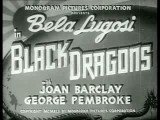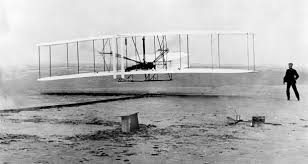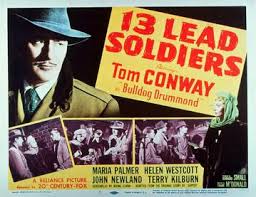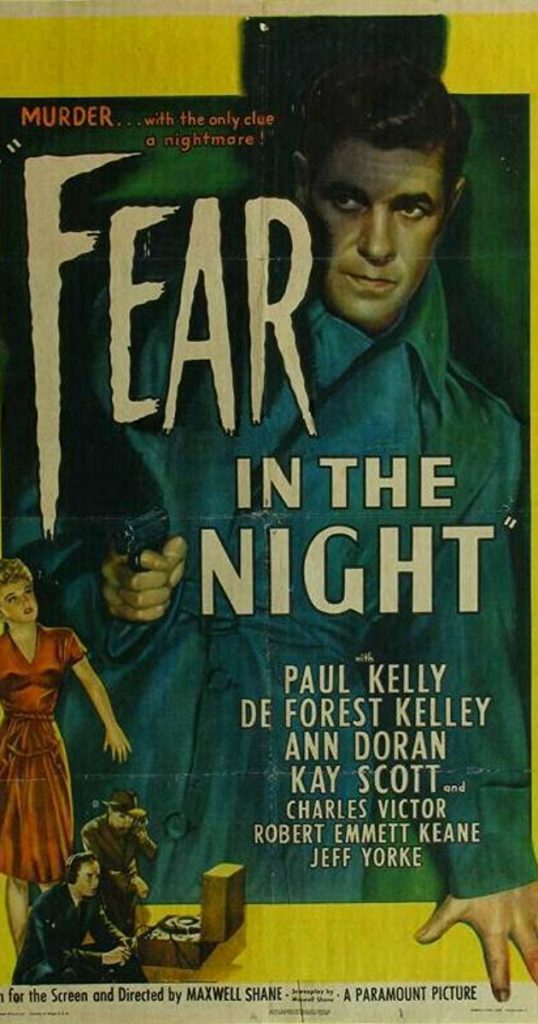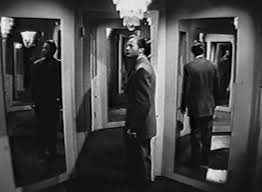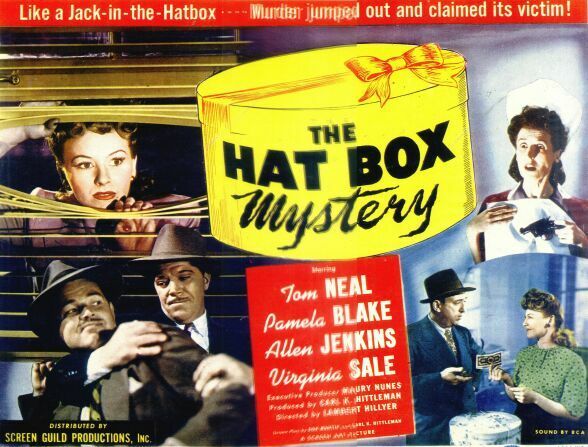Seven Doors to Death (1944)
IMDb mea-data is 1 hour and 4 minutes, rated 4.6 by 135 cinematizens.
Genre: Mystery
Verdict: Droll
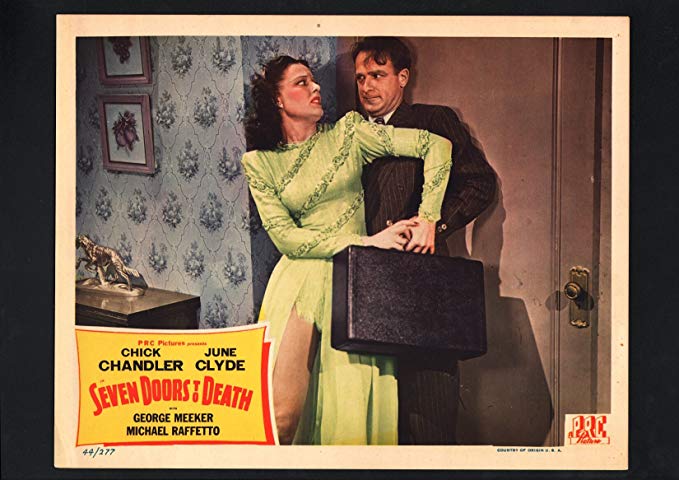
It starts with a bang! A shot rings out and a woman with a gat flees the nocturnal scene, accosting a passing motorist who is so flustered to have a pistol poking in his neck that he drives into a wall and wakes up suspected of murder. Yikes!
Note. Keep back door locked when driving through movie sets. We always do.
To clear himself he has to find the frail, which he does right where she picked him up, and they join…forces to clear each other. There is much banter on the way to the inevitable.
Mustachioed plod is so low key that he becomes a chorus merely content to observe and comment, but at least he is not a flat-footed oaf as police are usually portrayed in these B films despite the injunction in the Hayes Code that required respect for law and order. In 1944 movie I was somewhat surprised to see that mo’ at a time when the clean-shaved army look was the patriotic norm.
‘What about the seven doors?’ asked the fraternity brothers when they regained consciousness. The murder occurred in a small shopping mall with seven shops each with a door around a sunny courtyard. That makes seven doors. Got it?
The frail sells hats, there is a silversmith, an art dealer, a furrier, a photograph, an antiquarian, and a forgotten. While the mall is well lit, airy, and open, there is a basement which is dark, dank, and creepy where much of the action occurs. Well, it may have occurred there but the print I watched on You Tube was so poor all the basement scenes were either inky or murky, and in either case muddy.
The specialism of each merchant figures in the story. Ditto what they might have in the basement. Nice and neat.

Chick Chandler stars, an accomplished second banana, and this is one of a few leading roles in his 185 IMDb credits. As with the other players, this unknown film is one of the three he is ‘Best Known For.’
It opened on 16 August as the Canadian First Army broke through the Falaise Gap in Normandy while in the Pacific the Seventh US Army Air Force, including my dad, set up in Guam, despite the continued combat with Japanese left on the island, for long range missions over Japan.

